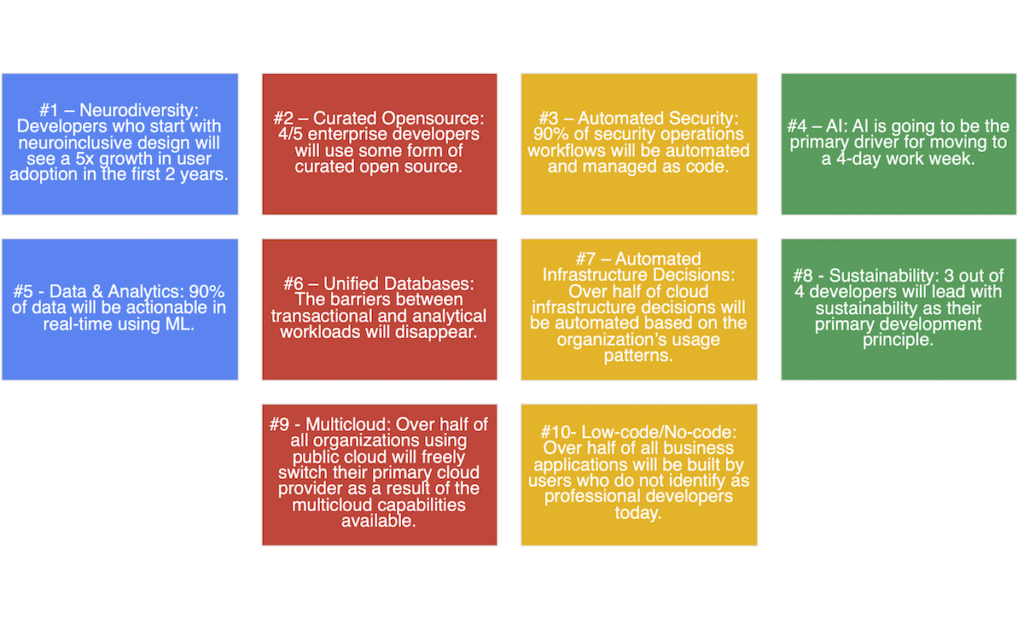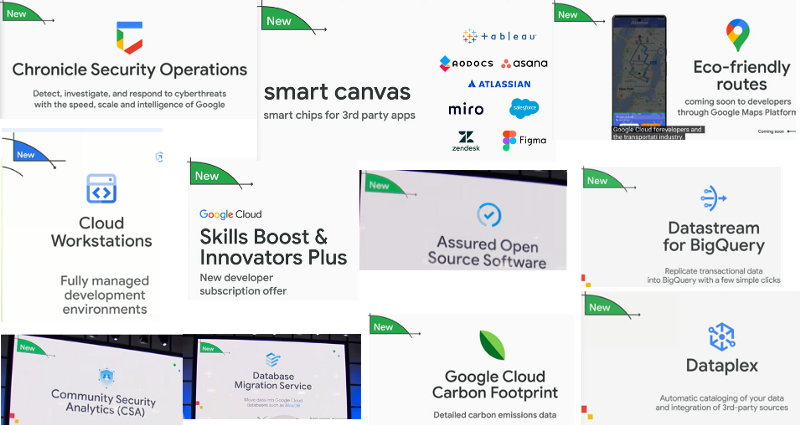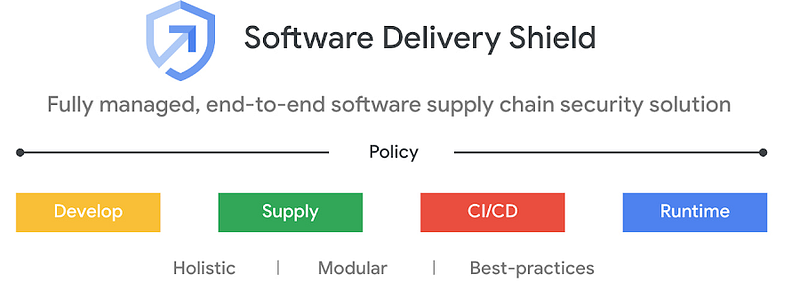Along with significant product announcements, Google Cloud Next 2022 showed the company’s expanding customer base and partner ecosystem. This article outlines key takeaways from Google Cloud Next 2022, which has expanded its audience thanks to the conference’s global broadcast.
#1 — Expanding Customer & Partner Ecosystems
- Keynote participation by leaders from Google Cloud’s key customers such as — Jim Farley (CEO, Ford), Brian Armstrong (CEO, Coinbase), Kevin Mandia (CEO, Mandiant), and many more — indicates a focus on growing customer acquisition across industry sectors.
- With the rise of hybrid and multi-cloud architecture and leveraging the customer relationship and partner’s ecosystem, Google Cloud has expanded its presence in enterprise organizations.
- Partnership highlights also include MongoDB (combined Atlas offering), Sisu data (for AI/ML powered analytics for Google Cloud BigQuery), NVIDIA (for accelerated computing), and many more.
- Enabling innovation in emerging trends like Web3 by building partnerships with companies such as NEAR, Nansen, Solana, Blockdaemon, Dapper Labs, and Sky Mavis.
#2 — Broadening & Deepening Security Solutions
- Google Cloud is broadening security services across the software supply chain — launched Software Delivery Shield for a fully managed, end-to-end software supply chain security solution.
- Launched Chronicle Security Operations to detect, investigate, and respond to cyberthreats (combining offerings from the recent acquisition of Mandiant — a cybersecurity company).
#4 — Enabling Developer’s Productivity
- With the launch of Google Workstations, Google has started offering a fully-managed development environment with security as a prime consideration. Jetbrains has already launched a plugin to enable remote development session for Google Workstations.
- Google Workspace (earlier G Suite) has already 3B+ users with a focus on increasing productivity and collaboration.
- Chronicle Security Operations, which is a cloud-native service enabling security teams to detect, investigate, and respond to cyber threats quickly.
- Google Developer keynote is a must-watch with the top 10 cloud technology predictions:

#5 — Empowering AI & Data Features
- BigQuery Omni has been supporting federated multi-cloud data analytics since 2020. Google BigQuery, a data warehouse solution launched almost 10 years back, now supports multiple Open source software (OSS). With BigLake expanding BigQuery capabilities to other object stores supporting open data formats such as CSV, JSON, Avro, Parquet, and ORC.
- Read more about Google’s key takeaways from Data Cloud Summit 2022 by clicking here.
- Vertex AI was first launched by Google in 2021 as a fully managed Cloud AI service. With launch of Vertex AI Vision, a Serverless offering, reduces time to build compute vision applications for any enterprise.
- With the launch of Translation Hub, a new translation AI Agent for enterprises, you can self-serve document translation with more than 100+ languages.
- Open-source solutions such as Apache Spark, Presto, Apache Hadoop, and others continue to become industry-standard in enterprise data lakes and big data architectures. Google’s support for open-source has been phenomenal and will continue to evolve over the years bringing innovative solutions to the community.
- Supporting the open data system and partnering with leading data companies such as MongoDB, and Sisudata has been the highlight of Google Cloud Next.
#6- Focusing on Sustainability, Clean Cloud, and New Trends
- With Moore’s law slowing down, performance innovation with a combination of hardware and software optimizations for supporting novel workloads for Web3 takes priority. Google announced a strategic partnership with Coinbase to better serve the Web3 ecosystem.
- Google Cloud Carbon Footprint helps to measure, report, and reduce the workload’s cloud carbon emissions, and has been launched recently.
A glimpse of key announcements across diverse areas below:

References:
- Google Cloud Next 2022
- What’s next for digital transformation in the cloud
- All 123 things we announced at Google Cloud Next ’22
- Open Infrastructure Announcements
- Digital Transformation in Cloud
Disclaimer:
All data and information provided on this blog are for informational purposes only. All the images sources used are from Google Cloud Summit for reference. The author makes no representations as to the accuracy, completeness, correctness, suitability, or validity of any information on this blog and will not be liable for any errors, omissions, or delays in this information or any losses, injuries, or damages arising from its display or use. This is a personal view and the opinions expressed here represent my own and not those of my employer or any other organization.


